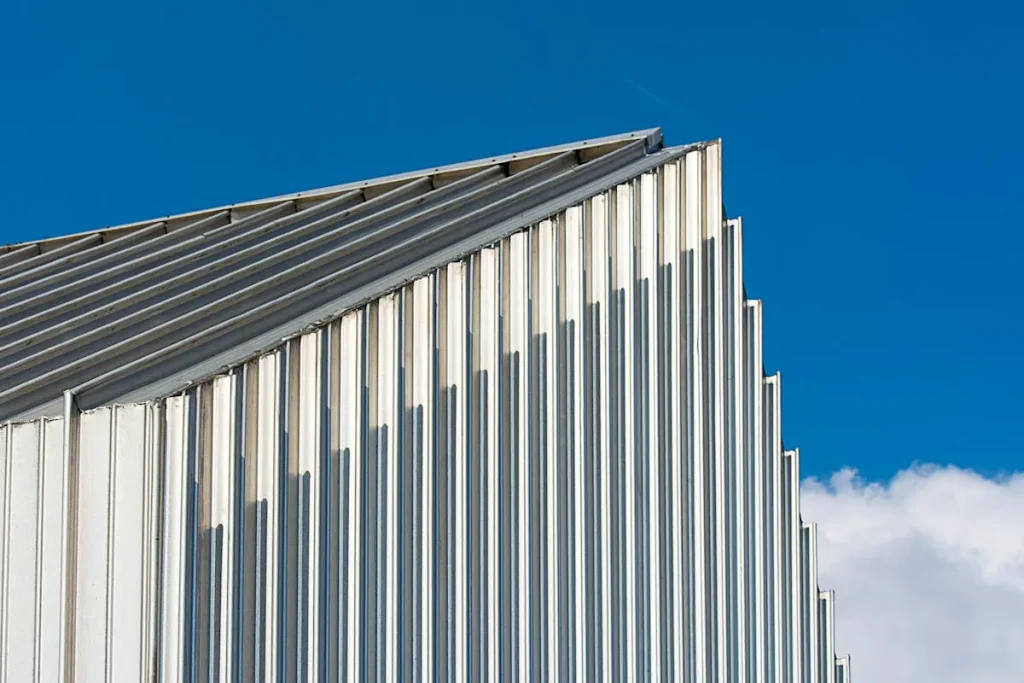The Benefits of Sustainable Metal Roofing
Metal roofs are durable and can last up to 50 years, much longer than traditional asphalt roofs. They are also energy-efficient, reflecting sunlight to keep your home cooler and reduce air conditioning costs. Additionally, metal roofs are environmentally friendly as they can often be recycled at the end of their lifespan. Metal roofing requires less maintenance and can withstand harsh weather conditions, making it a cost-effective and sustainable option for your home.

Long-Term Economical Savings
Metal roofing can save you money in the long run due to its durability and energy efficiency. Metal roofs can last 40-70 years, while traditional asphalt roofs typically last 12-20 years. The initial cost of metal roofing may be higher, but it pays off over time as you save on repair and replacement expenses. Additionally, metal roofs reflect sunlight, reducing cooling costs in the summer. The long-term economical savings of sustainable metal roofing make it a wise investment for homeowners.
Energy Efficiency and Cost Reductions
Metal roofs can help you save money through their energy-efficient properties. These roofs reflect sunlight, reducing the amount of heat absorbed into your home. This can lower your cooling costs during hot months. Additionally, metal roofs have a long lifespan, reducing the need for frequent replacements compared to traditional roofing materials. Investing in sustainable metal roofing can lead to significant cost reductions over time.
Durability and Longevity of Metal Roofing
Metal roofing is extremely durable and can last up to 50 years or more with proper maintenance. It can withstand various weather conditions such as rain, snow, hail, and high winds without deteriorating. Metal roofs are also resistant to rot, mildew, and fire, making them a reliable choice for long-term protection of your home. Additionally, metal roofs require minimal upkeep compared to other roofing materials, saving you money on repairs and replacements in the long run.
Environmental Impact of Sustainable Metal Roofing
Metal roofing is considered more environmentally friendly than traditional roofing materials because it is often made from recycled metal and is fully recyclable at the end of its lifespan. Additionally, the longevity of metal roofing reduces the need for frequent replacements, decreasing the amount of waste generated. Metal roofs can also be energy efficient, reflecting sunlight and reducing the need for air conditioning, which can lower energy consumption.
Increased Property Value with Metal Roofing
Metal roofing has the potential to increase your property value. Research suggests that homes with metal roofs can experience an appraisal value increase of up to 6% over those with traditional roof materials. This means that if your home is valued at $300,000, a metal roof could potentially add $18,000 to its appraisal value. Additionally, the durability and longevity of metal roofs can be attractive to potential buyers, making your property stand out in the market.
Maintenance and Upkeep of Metal Roofs
Metal roofs require minimal maintenance and upkeep, making them a cost-effective option in the long run. Here are some key points about maintaining metal roofs:
- Metal roofs are durable and resistant to most weather conditions, reducing the need for frequent repairs.
- Regular inspections can help identify any potential issues early on, preventing costly repairs down the line.
- Cleaning the roof periodically can help maintain its appearance and prevent dirt and debris buildup.
- Repainting the roof every few years can help protect it from rust and corrosion, extending its lifespan.
By investing in the maintenance of your metal roof, you can ensure its longevity and save money on repairs in the future.
Installation Process of Sustainable Metal Roofing
Metal roofs are typically installed by professionals. The process involves layering sheets of metal over your existing roof. Firstly, old roofing materials are removed. Then, a waterproof underlayment is placed to prevent leaks. Metal panels are then fastened securely to the roof frame. Finally, flashing and trim are added to ensure a watertight seal. Overall, the installation process of sustainable metal roofing is efficient and durable, providing long-term cost savings.
Common Myths About Metal Roofing Debunked
Metal roofs are often associated with myths that might deter some homeowners from considering this sustainable option. Let’s debunk some of the common misconceptions surrounding metal roofing:
- Metal roofs are loud – Contrary to popular belief, when properly installed with solid sheathing, metal roofs are no louder than other roofing materials during rain or hailstorms.
- Metal roofs attract lightning – Metal does not attract lightning more than any other material. In fact, a metal roof is safer than a combustible roof in case of a lightning strike.
- Metal roofs rust easily – Modern metal roofing materials are designed to be corrosion-resistant and are often coated or treated to prevent rusting. With proper maintenance, metal roofs can last for decades without rusting issues.
- Metal roofs make your home hotter in summer – Metal roofs are reflective and can actually help in reducing cooling costs by reflecting solar heat away from your home, keeping it cooler in the summer.
By dispelling these myths, you can make an informed decision about the benefits of sustainable metal roofing for your home.
Conclusion: Investing in Sustainable Metal Roofing
As we reach the end of this discussion, it’s clear that opting for sustainable metal roofing is a smart investment. Not only does it offer long-term cost savings, but it also contributes to environmental sustainability. By choosing metal roofing, you’re choosing a durable and energy-efficient option that can significantly reduce your utility bills over time. Additionally, metal roofs often come with extended warranties, providing you with peace of mind for years to come. Make the choice today to invest in sustainable metal roofing for a financially and environmentally beneficial future.
